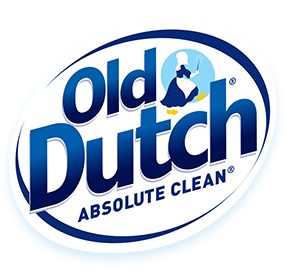Old Dutch products vs. Homemade preparations
Can I use a homemade preparation (e.g. baking soda and hot water) for cleaning?
Yes, you can. However, homemade cleaning products are generally not as efficient as commercially formulated products, and using them often requires extra effort and time spent cleaning. Commercially formulated products undergo extensive safety and performance tests before they are marketed.
Homemade cleaners may also use more products and more hot water to get the job done than commercially formulated products, which can mean extra costs. For example, cream of tartar, which is sometimes recommended as a metal cleaner, is 12 times more expensive per unit weight than a commercial aluminum cleaner.
In addition, studies have shown that most home recipes have no disinfectant properties. This is particularly important when there are health-related reasons for using an antibacterial household cleaning product, such as on cutting boards that might be contaminated with Salmonella or on a surface that has been in contact with someone who is sick. Only disinfectants approved by Health Canada have been tested for their ability to kill germs.
Mixing products
Can I mix two or more household cleaning products for better results?
Unless specifically indicated on the product label, it is not recommended to mix household cleaning products. Ingredients in cleaning products may cause a chemical reaction that can release harmful or unpleasant substances.
Asthma and allergies
How can household cleaners help Canadians suffering from allergies or asthma?
Many things can trigger an asthma attack, including common allergens such as pet dander, dust mites, mould, mildew and pollen. Some people get symptoms from only one allergen, while others can be affected by more than one. Household cleaning, as part of an effective allergen management plan, can help control these allergens and is one of the easiest steps in reducing allergies or asthma attacks.
Animals
Are Old Dutch products tested on animals?
It is a long-standing company policy that none of our products are tested on animals under any circumstances.
Biodegradability
What is it?
Biodegradability is the ability of a substance to break down by the action of microorganisms; a biodegradable product is less likely to harm the environment.
Although, in absolute terms, this characteristic can apply to most known substances, according to an internationally recognized and accepted standard, a product is only considered biodegradable if it is likely to break down by the action of microorganisms in precise conditions and within a determined period. Certain internationally recognized organizations, such as the Organization for Economic Co-operation and Development, OECD, have developed and published methods to determine whether a substance can be classified as biodegradable. Therefore, to be considered biodegradable, a substance must have been submitted to a universally recognized method for determining biodegradability and a reference to the method used must accompany the product declaration.
What about Old Dutch products?
Old Dutch products with the “biodegradable” logo on the label have been tested according to this norm by an independent laboratory and have passed all the tests.
Accordingly, Old Dutch products comply with OECD 301D test norms, which stipulate that a substance is considered biodegradable if 60% of it biodegrades within 28 days. Therefore, this is a fairly reliable indication that complete decomposition is not too far in the future. Old Dutch products are biodegradable at a rate of 60% or more within 28 days; this varies from product to product.
